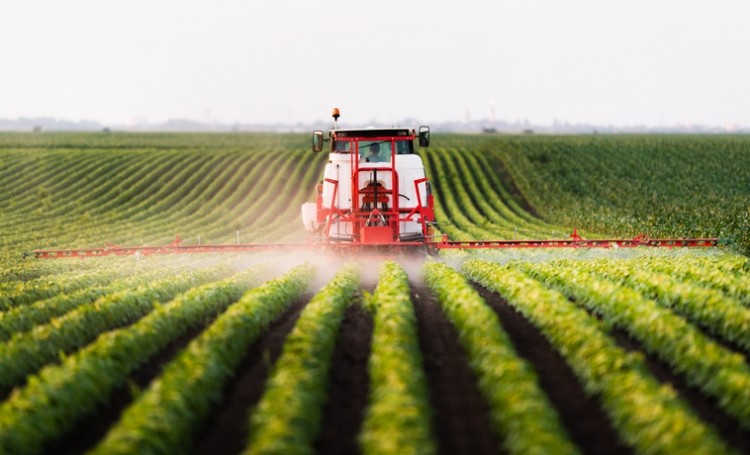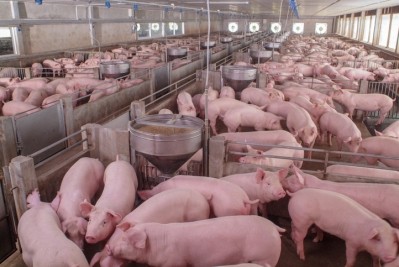Pesticide MRLs needed for feed co-products to enable trade facilitation: FEFAC

The spotlight was shone on the regulation, (EC) No 396/2005, at a workshop run by FEFAC, along with COCERAL and FEDIOL last week.
That meeting involved regulators, grain traders, crushers and compound feed manufacturers, among others, with the stakeholders discussing the ongoing EU regulatory transition to lower MRLs for pesticides in commodities, and how to prevent potential supply disruptions.
“With ongoing EFSA reviews and more and more pesticide MRLs being lowered in the EU, we think it is only a matter of time before we will be confronted with a case whereby MRL exceedance could lead to blockages of raw materials, with the EU MRL approach so different from that of third countries,” said Alexander Döring, secretary general of FEFAC.
It is about knowledge sharing, information exchange, and identifying areas of concern to take mitigation measures to prevent a trade blockage from occurring, regarding both the functioning of the internal markets for home-grown products and imports, he said.
A lack of focus on feed in EU pesticide MRL law also has implications for internal EU trade.
“Our purpose was to explore what is feasible within the existing EU regulatory framework in terms of trade facilitation,” added Döring.
Co-product MRLs
Foremost, there is a need to establish pesticide MRLs for raw materials such as co-products used in feed, he said.
“There is still a lot of legal uncertainty about how EU pesticide MRL legislation should be applied in the feed sector, there are serious gaps in the regulation in relation to feed which makes its enforcement by both companies and authorities difficult.”
As of now, there is no single pesticide MRL set for a compound feed. “It is impossible to do, say the legislators, because if you look to a standard compound feed, there are 10-20 ingredients, all kinds of co-products, and processing factors [to take into account].”
But calculating an EU pesticide MRL for soybean meal, a standard co-product used in feed, is challenging:
“It is very difficult. There is a footnote in Regulation (EC) No 396/2005, which says the food MRL applies to feed unless the feedstuff in question is exclusively used in the feed industry, meaning that it has no food use. For soybeans, the food MRL would apply, but for soybean meal, we consider that it is only used in the feed industry.
“So, what is the MRL for soybean meal then if you don’t use the food MRL? Well, the rules say each Member State would have to run its own risk assessment to determine its own risk based MRL. There is no guidance on how to do this, it could result in 28 MRLs for soybean meal in the EU,” said Döring.
New guidance developed
The workshop heard, however, that, one Member State, Belgium, is moving ahead in this area. It has developed a national guideline for its own control authorities on how to establish MRLs for the feed sector based on the original legislation. “It is a more harmonized approach at national level on how to calculate MRLs for feedstuffs. There was great interest in this supporting document at the workshop, and there was a call to the Commission to facilitate the difficult work of Member States in this area by having similar EU-wide guidance,” said Döring.
Moreover, he said, annex six of Regulation (EC) No 396/2005 should list processing factors for pesticides in food commodities to support Member States to develop MRLs based on risk assessments: “Currently, that Annex is empty due to the complexity to fill it in."
EFSA has such a database, as does the German national authorities, but they are not aligned, he said. “There is a project ongoing to look for some more alignment on these. The problem remains that some Member States work with such databases, others do not, they just apply the food MRL, so we are stuck with this unlevel playing field.”
EFSA dossier appraisals
To add to industry challenges, there about 400 dossiers under review by EFSA in terms of potential MRLs change, Döring noted.
“We, as users, are lost in the jungle. It is difficult to assess which of these pesticide MRLs will impact trade. And when we learn about an EFSA opinion, it is often too late.
"There is no reliability in the way the EU manages the MRL calendar and it is not compatible with the way commercial contracts are done - such contracts need to be based on existing MRLs. Feed companies are often taking forward contracts, nine months ahead, so, as an industry, we have insufficient time to adapt to changing MRLs.
"Essentially, the EU pesticide MRL review process, as it stands, does not match the commercial realities and does not allow us to secure our supply chain.”
Nathalie Lecocq, director general, FEDIOL, also weighed in on this:
“MRL changes cannot be implemented within a few months. Sufficient lead-in times are necessary to change agricultural practices, to develop alternative substances or to implement new practices that are protective of crops.”
Trade with third countries
Representatives from Asian countries, the Americas and other third countries were present at the workshop last week as well, said Döring. One aspect that they were called on to be more transparent about was the actual pesticides in use by farmers in their markets, as it was pointed out that such information would help facilitate feed and food trade with the EU, he added.
Iliana Axiotiades, secretary general, COCERAL, said that traders in agriculture commodities are constantly striving to meet EU demand for food and feed ingredients, and, to that end, take a variety of measures to help tackle the risk of supply disruption across the different supply chains that rely on imports.
"This is particularly the case for high-protein sources, where Europe imports over 70% of its needs. We closely work with the other sectors that rely on imports of proteins and share the same concerns related to MRLs on pesticides in order to ensure their input needs are covered.”












